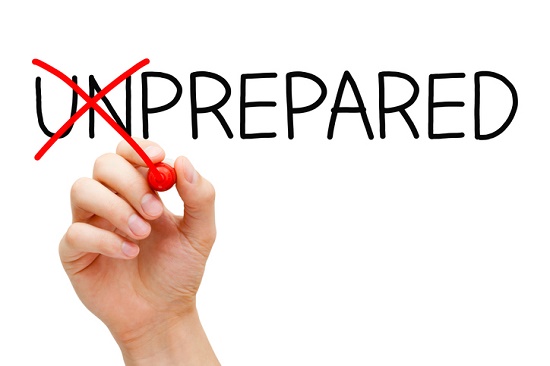
Hearing aids may be more fashionable than ever, but there definitely aren’t any “ready-to-wear” models. You need to prepare yourself by going through the whole process listed here with your hearing care professional. By understanding the process, you’ll set yourself up for success each step of the way.
Prepare for your first appointment
At your hearing test appointment, your hearing care professional tests your hearing, studies the results, and helps you conclude whether or not hearing aids are appropriate at this time. It’s important to bring a list of questions to review with your hearing care professional.
Here’s a list of questions you can start off with (add more of your own if you need to):
- What kind of hearing loss do I have? Is it mild, moderate, severe, or profound?
- Could hearing aids help in my case—should I get them for both ears?
- Which hearing aid is best for me? How do I balance cost with features I want?
- What are the financing options for hearing aids? (Installment plans, private insurance, credit, state programs, etc.)
After Your Hearing Test
You may not need hearing aids if your hearing tests come back normal, but your test results can still be a helpful baseline for any future tests.
If the results indicate you have hearing loss, you may indeed benefit from trying out some hearing aids. Your hearing care professional should discuss all of this with you in depth.
When selecting hearing aids, be sure to discuss the following items:
- Programmability – most hearing aids are digitally programmable to match the specifications of your individual hearing loss profile. This is really very important; don’t let anyone try to sell you a hearing out of the box without customizations, or it probably won’t work right.
- Style – hearing aids come in a wide variety of sizes and styles: some models sit behind the ear to models that fit entirely within the ear canal. It’s up to you how you want to balance price, ease-of-use, functionality, and aesthetics in making your decision.
- Wireless connectivity – several hearing aid models can connect wirelessly to most compatible smartphones. This enables you to adjust volume and settings discreetly, send phone calls directly to your hearing aids, and even stream your favorite music without any wires or a separate hearing aid remote control.
- Advanced features – some hearing aids come equipped with additional advanced features, like directional microphones to enhance speech, background noise reduction, environmental settings, and telecoils for clearer phone calls. Keep in mind that these features may cost extra, so balance your needs with your budget when making that decision.
This may all seem confusing, but your hearing care professional is trained to help guide you through the decision-making process. Of course, if someone tries to rush or steer you to a decision without addressing your questions, that should be a red flag.
Bringing your new hearing aids home
Once you’ve selected your hearing aids and had them programmed by your hearing care professional, you’re ready to bring them home. But you should keep two things in mind.
First, just understand that you won’t just love your hearing aids right away. You’ll likely be hearing sounds you haven’t heard in a while, and the overall sound will just seem “off.” This is perfectly normal and, after a few weeks, will subside.
We recommend starting small at home. Try watching a movie and paying particular attention to the dialogue, engage in one-on-one conversations in a quiet room, and try listening to music and picking out or following certain instruments.
Even though it may be uncomfortable at first, do try your best to wear your hearing aids as much of the day as possible, putting them in when you wake up and taking them out before bed. This will speed up the adjustment process, and after a few weeks, you’ll be glad you put in the effort.
If you struggle with your first few days of hearing aids, just remember: Your hearing aids can be adjusted! If you continue to have difficulty hearing or adapting to the new sound, schedule a follow-up visit with your hearing care professional to fine-tune the settings.
Second, to ensure continued performance, you’ll need to properly maintain and care for your new hearing aids. This means daily cleaning, proper storage, and managing your battery supply.
Pro Tip: make adjusting to your hearing aids easier on yourself with the right tools and habits. Hearing aid cleaning kits, storage cases/sanitizers, and batteries can all be supplied, with tips, from your hearing care professional.
Every new set of hearing aids requires an adjustment period, but once you get through that time, you’ll suddenly realize that your quality of life has greatly improved with the better hearing your hearing aids provide. If you have any questions about the process or want to get started, give us a call today.